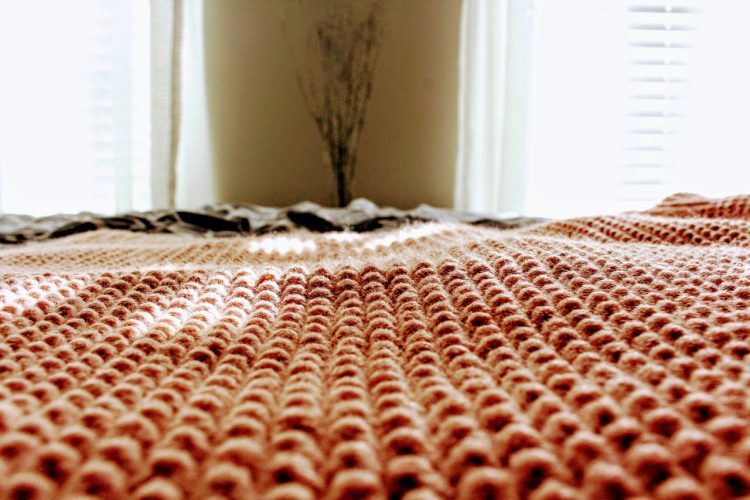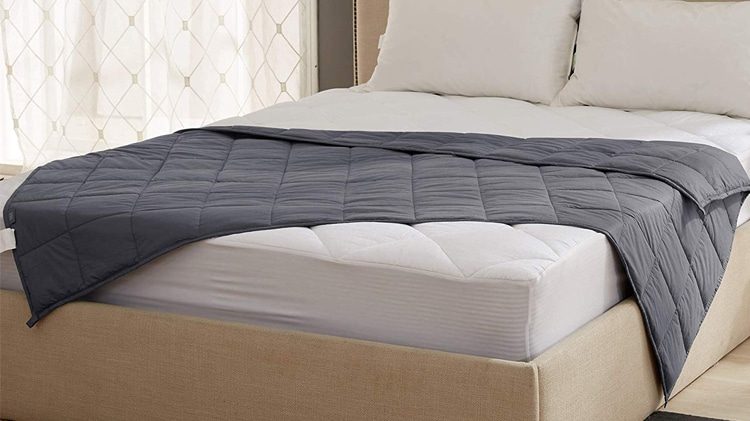Ever felt a cramping, achy, strange numbness in your leg especially after long hours of sitting in the same position? Restless Leg Syndrome (RLS) is a neurological condition that creates similar unpleasant sensations in the legs, albeit at a much severe level.
The symptoms are triggered by long periods of inactivity and are more pronounced during evening or night hours when you are trying to relax or sleep. RLS is therefore often classified as a sleep disorder.
So how does one treat this condition that is known to affect around 7-12% of the U.S. population? Well for those with no apparent “medical” cause, the treatment is directed at relieving the symptoms and includes certain lifestyle modifications. Medications, though rarely prescribed, are mainly targeted at increasing the dopamine levels (neurotransmitter that triggers relaxation and feelings of happiness) in the blood.
Use of DPTS, or deep pressure touch stimulation, is known to be particularly effective when treating the symptoms of Restless Leg Syndrome. The deep pressure exerted on the body’s sensory points helps in soothing the aches and pains, calms the mind and body, and increases the secretion of serotonin and melatonin—the happy hormones that elevate your mood and induce better sleep.
Specialized products such as weighted blankets and lap pads, that work on the principle of deep pressure stimulation, offer similar benefits in a compact and ready-to-use form. Customized explicitly for your body weight, weighted blankets help you enjoy a restorative sleep and provide significant relief in RLS symptoms.
Let’s take a closer look at this disorder and how weighted blankets can help in treating and easing the symptoms of RLS.
Restless Leg Syndrome: Understanding the signs and symptoms
Restless Leg Syndrome or Willis-Ekbom disorder is a neurological sensory condition that is triggered by extended periods of inactivity such as long-distance flights or car trips, certain relaxation exercises, immobilization due to a cast, and so on.
There are no definite tests for this disorder! RLS is characterized primarily by the unpleasant crawling and throbbing sensations in the lower limbs. The sensation is difficult to define but is typically felt in one or both the legs, and sometimes in the arms and chest.
The symptoms are more pronounced during evening and nights when the person is trying to relax or go to sleep. People with this condition can often be seen pacing on and off the ground or moving their limbs vigorously, as such movement seems to ease the throbbing sensations associated with RLS. This can also happen involuntarily during their sleep, at several occasions all through the night, leading to an interrupted sleeping pattern.

Poor quality of sleep leads to exhaustion and daytime sleepiness. This further leads to lack of concentration, lower productivity at school or work, impaired memory, and in severe cases depression and heightened anxiety.
Research suggests that about five in 100 people will be affected by RLS at some point in their lives, with females twice as likely to experience it than males. This is an alarming number considering there are no definite tests or permanent cure for this condition.
How is Restless Leg Syndrome treated?
For people suffering from RLS, the main course of treatment is aimed at lifestyle modifications including better sleep habits, healthier diet, active routines, and a stress-free work lifestyle. There are many alternative therapies that are quite effective in helping with RLS symptoms and can be used in addition to the prescribed treatment plan.
One such alternative/supplementary therapy is DTPS or deep touch pressure stimulation. There are therapeutic products such as weighted blankets that simulate deep pressure stimulation and can be used in conjunction with prescribed treatment practices.
Here’s a detailed study on the different treatment options prescribed for RLS and how weighted blankets and deep pressure stimulation can be used in conjunction with each of these for faster and better outcomes.
Healthy sleep habits
A good night’s sleep is vital for everyone, more so for people suffering from RLS. Try getting into a fixed relaxation routine before bedtime—this could include a warm shower, switching off all the distractions including your TV and phone, avoiding caffeinated drinks after dinner, and so on. This can program your mind to get into a relaxation mode and help in improving the quality of your sleep.
You can also invest in a weighted blanket that is proven to help with sleep disorders. The added weight in these blankets gently exerts pressure on all your sensory points triggering the release of serotonin—the mood elevating hormone. Serotonin in turn gets converted to melatonin, the hormone that promotes sleep and relaxation.
Stretching and deep breathing exercises
As per a study conducted by the National Institute of Health, moderate amounts of exercise can help ease RLS symptoms. These could be simple stretching exercises or yoga practices that can enhance blood circulation throughout your body and soothe the aches and pains.

Exercising with proprioceptive props such as the gym ball, weighted lap pads, weighted blankets and cushions, and padded yoga mats can be very effective in treating restless leg syndrome. The gentle pressure of these props helps your body release serotonin—the mood elevating hormone. This in turn allows you to enjoy a restorative sleep relieving the unpleasant symptoms associated with RLS.
Deep pressure massage
Massages are recommended as an effective at-home treatment for Restless Leg Syndrome. The firm but gentle pressure applied during a massage improves the blood flow across your joints, eases tensed muscles, and alleviates the soreness and pain associated with RLS.
Weighted blankets function similar to a massage and can be used as an instant relaxation therapy. The added weight of the glass beads or poly pellets sewn inside the blanket distributes even pressure across the body’s joints and muscles. This helps in relieving the pain in the limbs and also enhances the secretion of “feel-good” hormones promoting speedy recovery.
Foot wrap
Foot wraps are like compact counterparts of weighted blankets. They are good for localized application especially if there is a particular joint or muscle that is swollen. Similar to weighted lap pads or blankets, foot wraps exert pressure on the affected muscles signalling it to relax. This in turn helps in reducing soreness and other symptoms associated with RLS.
Pneumatic compression
Pneumatic compression devices are like inflatable sleeves that can be worn over your leg to deliver consistent pressure. These devices inflate and deflate at regular intervals encouraging better blood circulation in the affected area.
Weighted blankets work on a similar principle and can be as effective in treating RLS. Based on the principle of deep touch stimulation, these blankets exert gentle pressure across your sensory joints and muscles. This improves circulation, makes you more aware of your limb movements and encourages better sleep—all of which contribute to improving RLS symptoms.
Prescription drugs
Usually recommended for severe cases, the medications for restless leg syndrome include pain relievers and dopaminergic drugs. The main function of these medicines is to increase the dopamine secretion in your blood—a neurotransmitter that manages your movements, emotions, and sensations of pain and pleasure.
However, extended use of such drugs can cause serious side-effects. A safer and effective alternative in such cases is the use of products such as weighted blankets that work on the principle of deep pressure touch therapy (DPT).

Simply speaking, weighted blankets use evenly distributed pressure to reduce chronic stress and promote the natural secretion of “feel-good” chemicals such as dopamine and serotonin. These in turn lead to healthier sleep and relaxation, helping RLS patients feel better.
The what, how, and where of weighted blankets
Weighted blankets, as mentioned above, simulate the effects of deep pressure touch therapy. They are heavy blankets with a filling of poly pellets or glass beads woven together and evenly distributed to offer therapeutic benefits. The fabric of the blankets can be cotton, polyester, or flannel depending on your preference.
The weight of these blankets is customized based on the individual’s body weight and height—a rough standard is 10% of the body weight plus a pound or two! Most weighted blankets are quilted and meticulously-sewn to ensure maximum comfort and durability.
What makes these blankets stand out is their ability to help relieve stress, treat sleep-related disorders, enhance mood and improve energy levels by using deep touch pressure stimulation.
When pressure is applied evenly across your sensory joints, it signals your body to release the “feel-good” hormones serotonin and dopamine, and it switches from the “sympathetic” nervous system to the “parasympathetic” nervous system mode. Simply put, you transition from a state of stress and anxiety to a state of relaxation — just by wrapping yourself in a weighted blanket!
Bottom Line
Restless leg syndrome is a painful condition that makes relaxing and sleeping a nightmare. Weighted blankets offer the benefits of deep pressure stimulation in a compact form and can promote a deep and restorative sleep.
There are also other compact weighted products such as vests, lap pads and even soft toys that offer similar benefits and can soothe your aching limbs. RLS patients can opt for some of the more compact options for frequent on-the-go usage.
Weighted blankets and other DTP-based products when used on a regular basis can trigger a chain reaction in the body encouraging an overall sense of calm and comfort. They are especially effective in treating RLS symptoms and can be used either as a stand-alone relaxation tool or as a supplemental therapy with your regular RLS treatment plan.
Sleeplessness and Restless Leg Syndrome feed off each other—using a weighted blanket can break this vicious cycle helping you live a more productive and healthier life.

